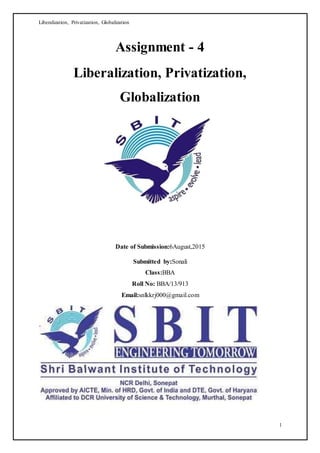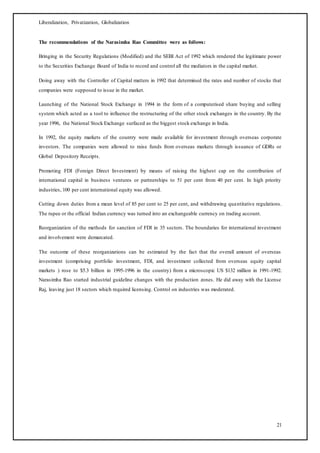This document discusses the topics of liberalization, privatization, and globalization. It defines these terms and explores their impacts. Globalization refers to increasing social, cultural, and economic exchanges across borders. It has both benefits and drawbacks for India, such as improved access to technology but also greater inequality. Liberalization involves removing trade barriers through policies like FEMA and FERA. Privatization aims to increase efficiency by transferring state-run industries to private ownership, but it also has advantages and disadvantages. The document then examines changes in various regions and countries resulting from these economic shifts.






















